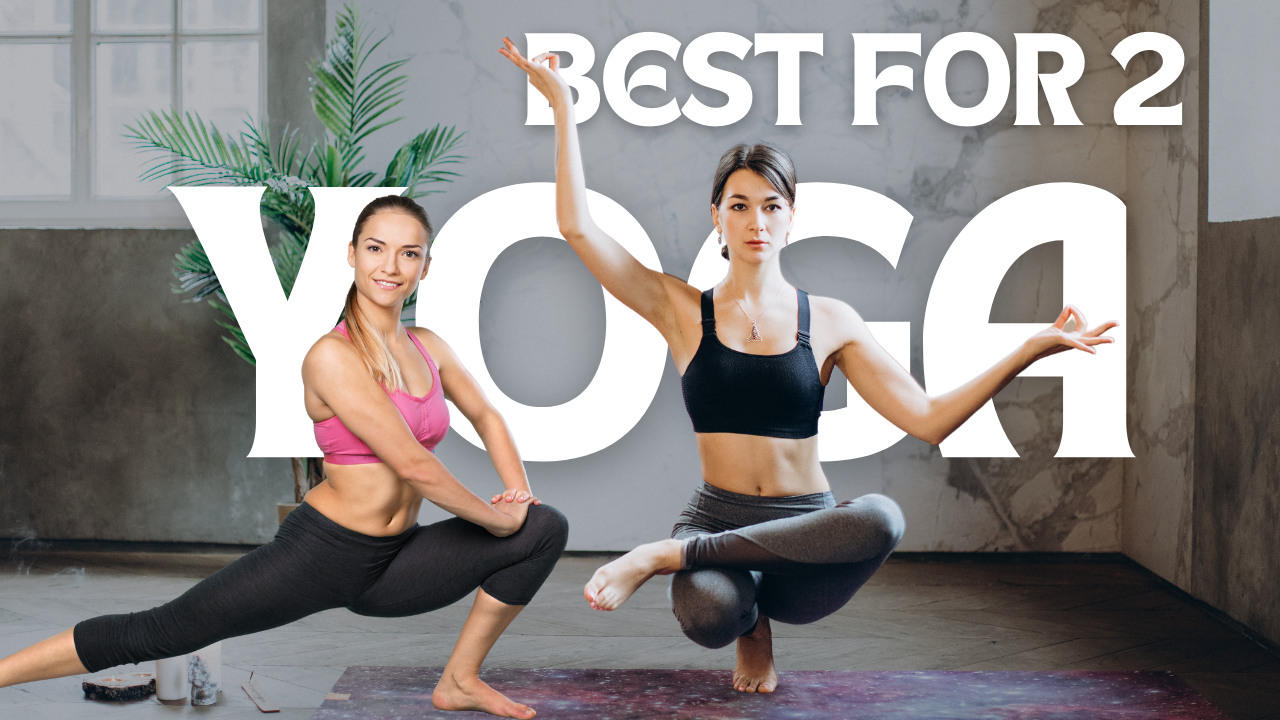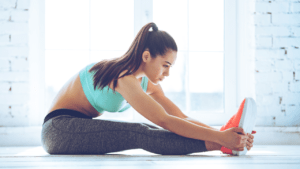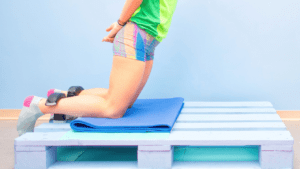“Best yoga poses for 2” Have you ever thought yoga was just a solo activity? Think again! Partner yoga, also known as yoga for two, is taking the wellness world by storm, and for good reason. While many people initially assume that yoga is all about solitary poses and inner reflection, partner yoga flips that script entirely.
It’s not just about bending and stretching; it’s about connecting and supporting each other through movement and breath. So, if you’ve ever wondered how to deepen your Best yoga poses for 2 practices or strengthen your bond with a friend or partner, you’re in the right place. In this blog, we’ll explore the exciting world of partner yoga and discover some fun and easy poses you can try with a buddy. Get ready to stretch, strengthen, and connect like never before!
Partner yoga might sound like a novel concept, but it’s actually been around for centuries. In traditional yoga practices, collaboration and community were highly valued, with practitioners often working together to achieve physical and spiritual goals. However, as yoga became more mainstream in Western culture, the focus shifted towards individual practice and personal growth. While there’s certainly value in solo yoga sessions, partner yoga offers a unique opportunity to share the benefits of yoga with someone else. It’s a chance to step out of your comfort zone, build trust, and deepen your connection with another person. So, if you’re tired of going it alone on the mat, why not give your partner’s Best Yoga Poses for 2 Yoga a try?
1. Why Practice Yoga with a Partner?
Partner yoga isn’t just a fun way to spend time with a friend or loved one; it also offers a host of physical, emotional, and relational benefits. Let’s take a closer look at why practicing yoga with a partner can be so beneficial:
Increased Flexibility
One of the most obvious benefits of partner yoga is increased flexibility. When you practice solo, you’re limited by your own range of motion. But when you add another person into the mix, you have the opportunity to explore deeper stretches and poses that may have seemed out of reach on your own. Plus, having a partner provides added support and stability, allowing you to safely push past your comfort zone and reach new levels of flexibility.
Deeper Stretching
In addition to increased flexibility, partner yoga also allows for deeper stretching. By using your partner’s body as leverage, you can access muscles and areas of tension that may be difficult to target on your own. This can lead to a greater range of motion, improved circulation, and reduced risk of injury. Plus, stretching with a partner can feel more enjoyable and rewarding than stretching alone, making it easier to stick with a regular yoga practice.
Enhanced Communication
Communication is key in any relationship, and Partner Best Yoga Poses for 2 is no exception. When you practice yoga with a partner, you have to communicate effectively to ensure that you’re both comfortable and safe in each pose. This requires active listening, clear verbal cues, and nonverbal signals such as eye contact and body language. As you learn to communicate more effectively on the mat, you’ll also strengthen your communication skills off the mat, leading to deeper connections and more meaningful relationships.
Improved Balance and Coordination
Partner yoga poses often require a high degree of balance and coordination, as you and your partner work together to maintain stability and alignment.
This can help improve your proprioception (awareness of your body in space) and kinesthetic sense (ability to move your body with precision and control), leading to better overall balance and coordination. Plus, practicing balance poses with a partner can be a lot of fun and add an element of playfulness to your yoga practice.
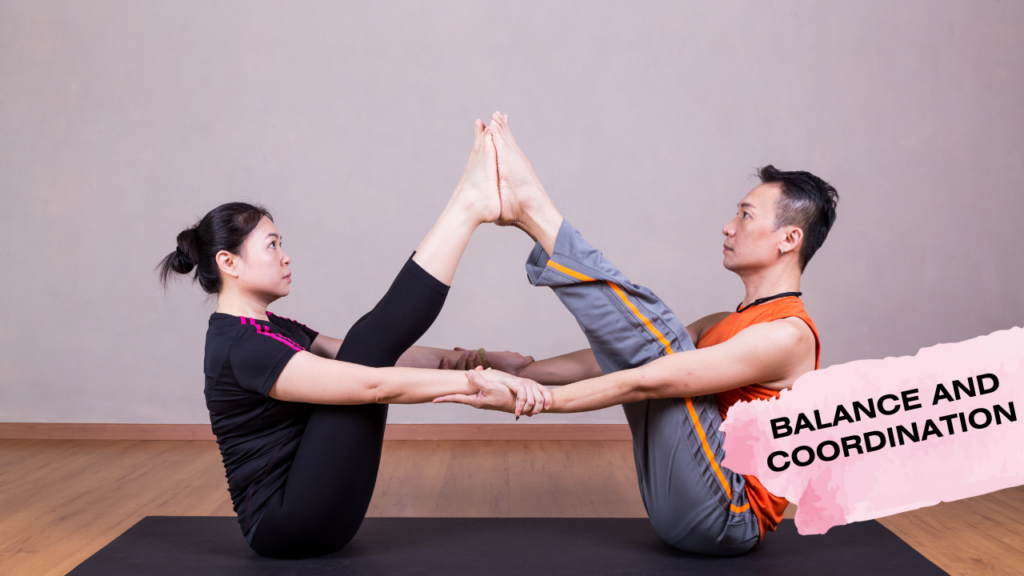
Greater Sense of Connection
Perhaps the most significant benefit of partner yoga is the sense of connection it fosters between you and your partner. When you practice yoga together, you’re not just sharing physical space; you’re also sharing energy, intention, and presence. This can create a profound sense of intimacy and trust, deepening your bond and strengthening your relationship. Whether you’re practicing with a romantic partner, a friend, or a family member, partner yoga is a powerful way to connect on a deeper level and cultivate a sense of unity and harmony.
2. Getting Started with Partner Yoga
You might think that partner yoga is only for experienced yogis or those in romantic relationships, but that couldn’t be further from the truth. Partner yoga is for everyone, regardless of age, experience level, or relationship status. Whether you’re a seasoned yogi looking to spice up your practice or a complete beginner curious about trying something new, partner yoga has something to offer you. So, let go of any preconceived notions you may have and get ready to embark on a journey of connection, exploration, and discovery.
If you’re new to partner yoga, getting started might seem a bit intimidating at first. After all, it’s not every day that you find yourself sharing your yoga mat with another person. But fear not! With a few simple tips and tricks, you’ll be well on your way to enjoying the many benefits of partner yoga in no time.
First things first, it’s important to find a compatible partner who shares your enthusiasm for yoga and is willing to explore this practice with an open mind. This could be a romantic partner, a close friend, a family member, or even a fellow yoga enthusiast you meet at your local studio. The key is to choose someone you trust and feel comfortable with, as partner yoga requires a certain level of vulnerability and intimacy.
Founding Yoga Partner
Once you’ve found your partner, it’s time to create a safe and supportive practice space where you can explore together without distractions or interruptions. Clear away any clutter, lay out your yoga mats side by side, and dim the lights if possible to create a calming atmosphere. You may also want to set aside some time to discuss your intentions and expectations for the practice, as well as any physical limitations or injuries you may have.
Now that you’re all set up and ready to go, it’s time to dive into some fun and easy partner yoga poses. But before we get into the specifics, let’s talk about some general tips for practicing partner yoga safely and effectively
- Communicate openly and honestly with your partner throughout the practice, letting them know if something doesn’t feel right or if you need to make any adjustments.
- Take things slow and listen to your body, avoiding any poses or movements that cause pain or discomfort.
- Use props such as blocks, blankets, or straps to support your practice and enhance your alignment.
- Have fun and don’t take yourself too seriously! Partner yoga is as much about laughter and playfulness as it is about strength and flexibility.
Now that you know the basics, let’s explore some fun and easy partner yoga poses that you can try with your partner.

3. 10 Fun and Easy Yoga Poses for 2
Partner yoga poses come in all shapes and sizes, from gentle stretches to challenging balances. Whether you’re looking for a relaxing way to unwind after a long day or a playful way to connect with your partner, there’s a partner yoga pose for you. Here are 10 of our favorite fun and easy partner yoga poses to try:
Double Tree Pose (Vrksasana)
- Stand side by side with your partner, facing the same direction.
- Place the sole of your inside foot against your partner’s inside foot.
- Bring the sole of your outside foot to rest against your inner thigh or calf, finding your balance together.
- Bring your hands to your heart center or reach them up towards the sky for a deeper stretch.
- Hold the pose for several breaths, then switch sides.
Seated Spinal Twist (Ardha Matsyendrasana)
- Sit back-to-back with your partner, legs extended in front of you.
- Inhale to lengthen your spine, then exhale to twist to the right, placing your left hand on your right knee and your right hand behind you.
- Your partner will mirror your movements, twisting to the left with their right hand on their left knee and their left hand behind them.
- Hold the twist for several breaths, then switch sides.
Partner Forward Fold (Paschimottanasana)
- Sit facing your partner with your legs extended and feet touching.
- Reach out and hold onto your partner’s hands or wrists.
- Inhale to lengthen your spine, then exhale to fold forward from the hips, keeping your back flat and your chest open.
- Your partner will mirror your movements, leaning back slightly to create resistance and support.
Partner Boat Pose (Navasana)
- Sit facing your partner with your knees bent and feet flat on the floor.
- Reach out and hold onto your partner’s hands or wrists.
- Lean back slightly, engaging your core muscles to lift your feet off the floor.
- Your partner will mirror your movements, leaning back with you and lifting their feet off the floor.
- Hold the pose for several breaths, then release and repeat.
Double Downward Dog (Adho Mukha Svanasana)
- Start in a traditional downward dog pose, with your hands and feet on the mat and your hips lifted towards the sky.
- Your partner will stand facing you, placing their hands on your lower back for support.
- Press into your hands and feet to lift your hips higher, while your partner gently presses down on your lower back to deepen the stretch.
- Hold the pose for several breaths, then switch roles.
Partner Child’s Pose (Balasana)
- Sit back on your heels with your knees wide apart and your toes touching.
- Your partner will sit back on their heels behind you, resting their forehead on your back and reaching their arms forward.
- Lean back into your partner’s support, allowing your spine to lengthen and your hips to release towards the mat.
- Hold the pose for several breaths, then switch roles.
Partner High-Five Plank
- Start in a plank position, with your hands shoulder-width apart and your body in a straight line from head to heels.
- Your partner will stand facing you, placing their hands on the mat in front of you.
- Reach out and high-five each other with your right hands, then return to the plank position.
- Repeat with your left hand, then continue alternating sides for several reps.
Double Dancer Pose (Natarajasana)
- Stand side by side with your partner, holding onto each other’s inside hand.
- Bend your outside knees and reach back with your outside hand to grab onto your foot or ankle.
- Kick your foot into your hand to lift it up towards the sky, opening your chest and lifting your heart.
- Hold the pose for several breaths, then switch sides.
Double Pigeon Pose (Eka Pada Rajakapotasana)
- Sit facing your partner with your knees bent and feet flat on the floor.
- Cross your right ankle over your left knee, flexing your right foot to protect your knee.
- Your partner will mirror your movements, crossing their left ankle over their right knee.
- Press gently on each other’s knees to deepen the stretch in the hips and outer thighs.
- Hold the pose for several breaths, then switch sides.
These are just a few examples of the many partner yoga poses you can explore with a friend or loved one. Remember to take it slow, communicate openly with your partner, and most importantly, have fun!
In the next sections, we’ll delve deeper into the benefits of each pose and offer tips for overcoming common challenges in partner yoga. So, stay tuned for more insights and inspiration to enhance your partner’s yoga practice!
4. Benefits of Each Pose
You might think that yoga poses are just about stretching and flexibility, but each pose offers a unique set of benefits for both your body and mind.
Let’s explore the specific benefits of each of the partner yoga poses we discussed earlier
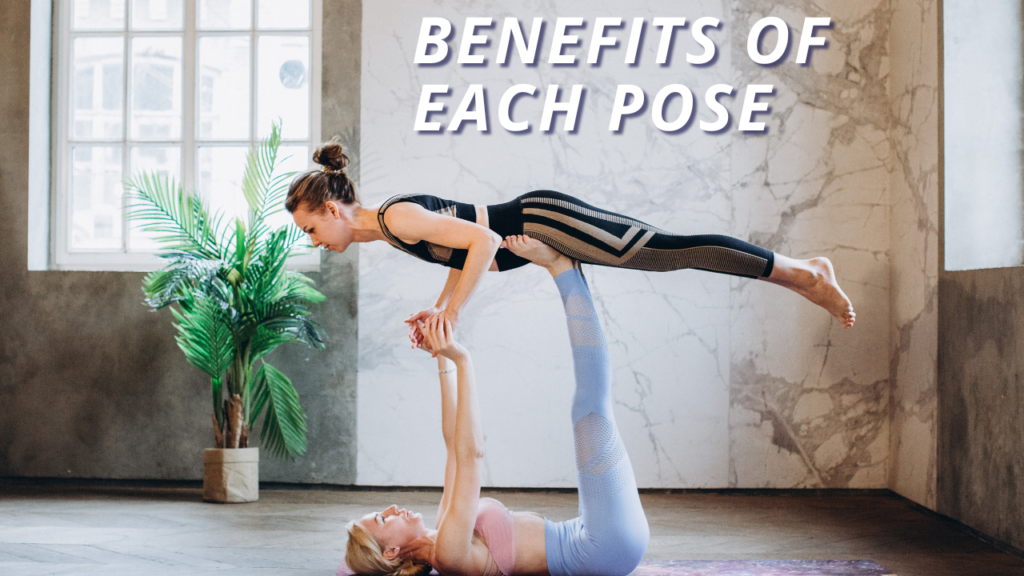
Double Tree Pose (Vrksasana)
- Strengthens the legs, core, and ankles.
- Improves balance and stability.
- Cultivates trust and communication between partners.
Seated Spinal Twist (Ardha Matsyendrasana)
- Stimulates digestion and detoxification.
- Relieves tension in the spine and shoulders.
- Promotes flexibility and mobility in the spine.
Partner Forward Fold (Paschimottanasana)
- Stretches the hamstrings, lower back, and shoulders.
- Calms the mind and relieves stress.
- Deepens the connection between partners through shared breath and touch.
Partner Boat Pose (Navasana)
- Strengthens the core muscles, including the abdominals and hip flexors.
- Improves balance and coordination.
- Enhances mutual support and encouragement between partners.
Double Downward Dog (Adho Mukha Svanasana)
- Stretches the shoulders, hamstrings, calves, and spine.
- Increases circulation and energizes the body.
- Encourages teamwork and collaboration between partners.
Partner Child’s Pose (Balasana)
- Relaxes the hips, thighs, and lower back.
- Calms the nervous system and reduces anxiety.
- Fosters a sense of safety and security between partners.
Partner High-Five Plank
- Strengthens the arms, shoulders, and core.
- Improves proprioception and body awareness.
- Adds an element of fun and playfulness to the practice.
Double Dancer Pose (Natarajasana)
- Opens the chest and shoulders.
- Stretches the quadriceps and hip flexors.
- Enhances balance, focus, and concentration.
Partner Supported Warrior 3 (Virabhadrasana III)
- Strengthens the legs, core, and glutes.
- Improves balance and stability.
- Deepens the connection and trust between partners.
Double Pigeon Pose (Eka Pada Rajakapotasana)
- Stretches the hips, glutes, and lower back.
- Releases tension and tightness in the outer thighs.
- Promotes relaxation and a sense of openness in the hips.
By practicing these partner yoga poses regularly, you and your partner can reap the physical, emotional, and relational benefits that come with shared movement and breath. So, roll out your mats, grab your partner, and start exploring the transformative power of partner yoga today!
5. Challenges and Solutions
While partner yoga can be incredibly rewarding, it’s not without its challenges. From differences in flexibility to communication barriers, there are a few common hurdles that you and your partner may encounter along the way.
But fear not! With a little patience, practice, and creativity, you can overcome these challenges and take your partner’s yoga practice to new heights.
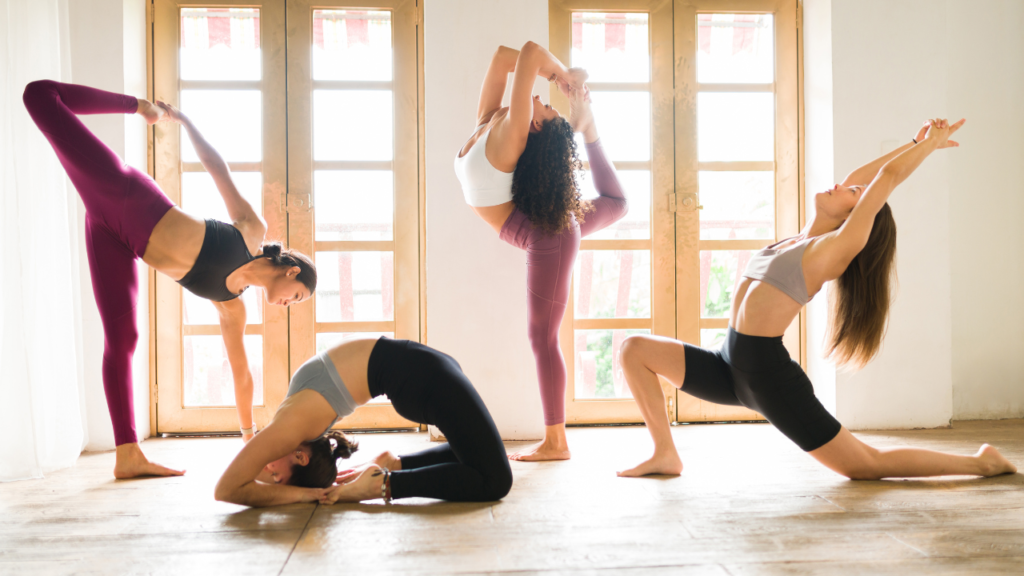
Differences in Flexibility
- Challenge: You and your partner may have different levels of flexibility, making it challenging to find poses that work for both of you.
- Solution: Focus on finding poses that are accessible and enjoyable for both partners and don’t be afraid to modify or adapt poses as needed. Remember, the goal is not to achieve perfect alignment, but to connect and support each other in the practice.
Communication Barriers
- Challenge: Effective communication is essential in partner yoga, but it can be challenging to articulate your needs and preferences while in a pose.
- Solution: Practice active listening and nonverbal communication techniques such as eye contact and gentle touch. Encourage open and honest communication with your partner, and don’t be afraid to ask for feedback or clarification if something doesn’t feel right.
Fear of Falling
- Challenge: Balancing poses can be intimidating, especially if you’re afraid of falling or injuring yourself.
- Solution: Start with poses that feel stable and secure, and gradually work your way up to more challenging poses as your confidence grows. Use props such as blankets or blocks for added support, and remember to trust in yourself and your partner’s ability to support you.
Physical Limitations or Injuries
- Challenge: Preexisting injuries or physical limitations can make certain poses uncomfortable or unsafe.
- Solution: Listen to your body and honor its limitations. Focus on poses that feel good and avoid anything that causes pain or discomfort. Consider working with a qualified yoga instructor or physical therapist to develop a personalized practice that meets your individual needs.
Lack of Focus or Presence
- Challenge: It can be easy to get distracted or lose focus during partner yoga, especially if you’re not used to practicing with another person.
- Solution: Practice mindfulness and presence throughout the practice, staying fully engaged in each pose and breath. Encourage each other to stay focused and present, and celebrate your accomplishments together, no matter how small they may seem.
By acknowledging and addressing these challenges head-on, you and your partner can create a safe, supportive, and enjoyable partner yoga practice that nourishes your body, mind, and soul. So, embrace the journey, embrace each other, and let the transformative power of partner yoga guide you toward deeper connection and greater well-being.
6. Safety Precautions
Some people may believe that partner yoga is inherently risky or dangerous, but with the right precautions and awareness, it can be a safe and enjoyable practice for everyone involved.
By following these simple safety guidelines, you can minimize the risk of injury and ensure a positive experience on the mat:
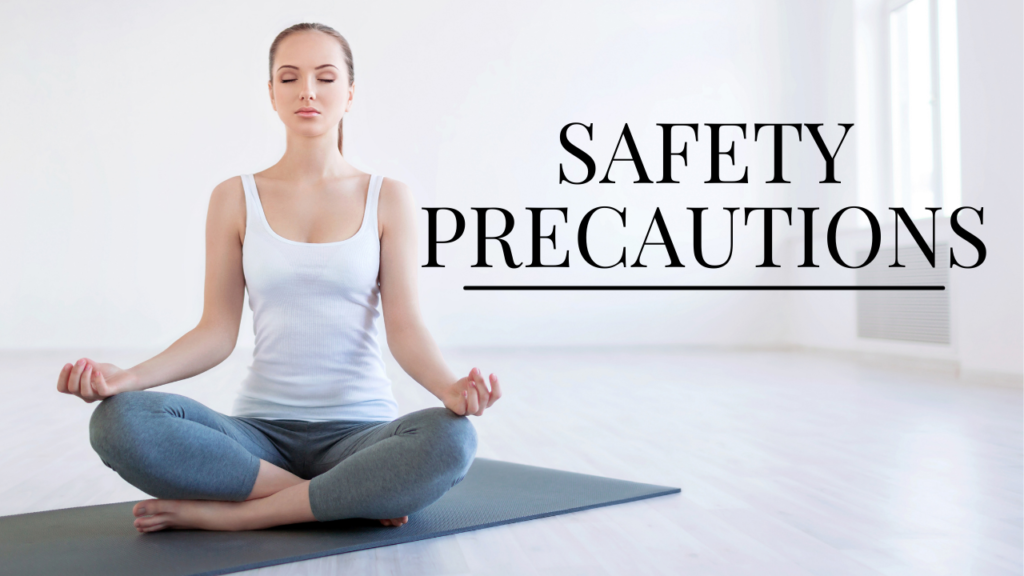
Warm Up Properly
Before diving into partner yoga poses, take some time to warm up your muscles and joints with gentle stretches and movements. This will help prepare your body for the demands of the practice and reduce the risk of strain or injury.
Communicate Openly
Communication is key in partner yoga, so be sure to communicate openly and honestly with your partner throughout the practice. Let them know if something doesn’t feel right or if you need to make any adjustments to ensure your safety and comfort.
Listen to Your Body
Pay attention to how your body feels in each pose and honor its limitations. If something feels uncomfortable or painful, back off and try a different variation or modify the pose to better suit your needs. Pushing through pain can lead to injury, so always listen to your body’s signals and respect its boundaries.
Use Props as Needed
Don’t be afraid to use props such as blocks, blankets, or straps to support your practice and enhance your alignment. Props can help you maintain proper form and prevent overexertion, especially if you’re working with tight muscles or limited mobility.
Stay Mindful and Present
Keep your focus and attention on the present moment throughout the practice, staying mindful of your breath and body sensations. Avoid distractions or rushing through poses, as this can increase the risk of injury. Instead, take your time and move with intention and awareness.
Avoid Overexertion
While it’s important to challenge yourself in partner Best yoga poses for 2, it’s equally important to know your limits and avoid overexertion. Don’t push yourself too hard or try to force your body into poses that feel beyond your capabilities. Remember, yoga is about finding balance and harmony, not pushing yourself to the point of injury.
By following these safety precautions and practicing with awareness and mindfulness, you can enjoy all the benefits of your partner’s Best yoga poses for 2 while minimizing the risk of injury. So, roll out your mat, grab your partner, and practice with confidence knowing that you’re taking the necessary steps to keep yourself safe and supported.
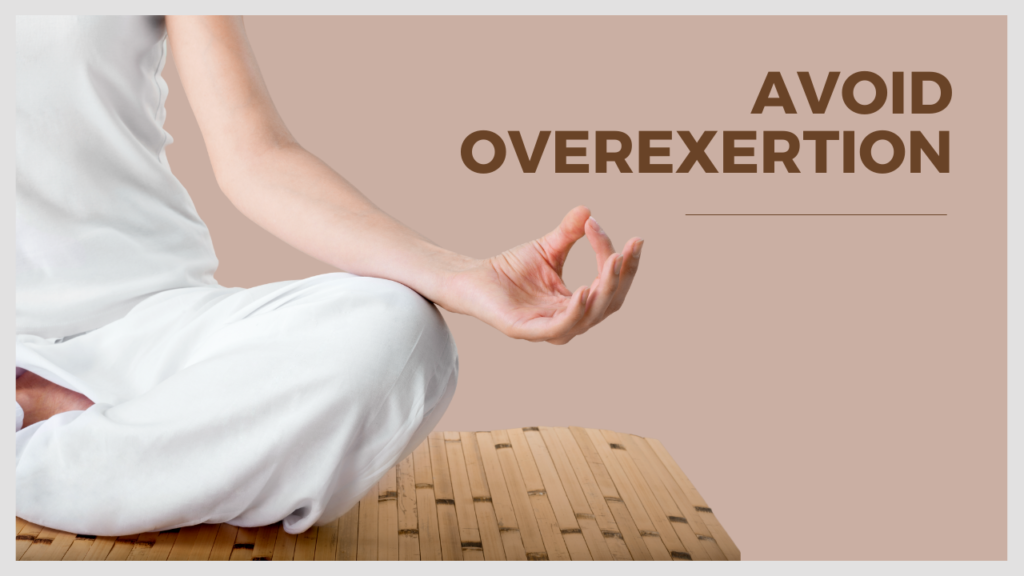
7. Conclusion
As we reach the end of our journey through the world of partner Best yoga poses for 2, I hope you’re feeling inspired, empowered, and excited to dive deeper into your practice. Whether you’re a seasoned yogi or a complete beginner, partner yoga offers a wealth of opportunities for growth, connection, and transformation.
By practicing Best yoga poses for 2 with a partner, you’re not only strengthening your body and improving your flexibility, but you’re also deepening your connection with another human being. Through shared movement and breath, you’re cultivating trust, communication, and intimacy in ways that can’t be achieved through solo practice alone.
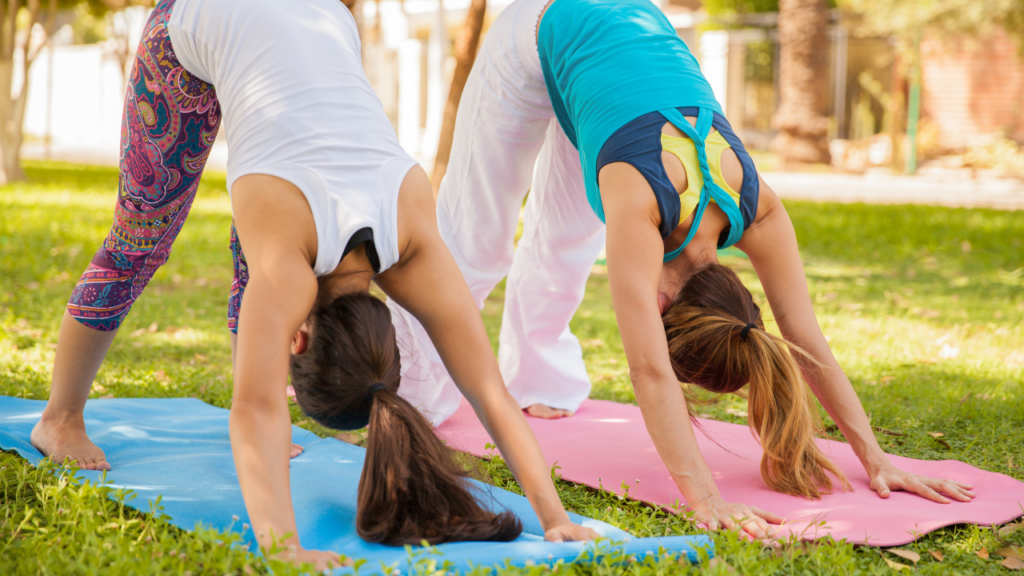
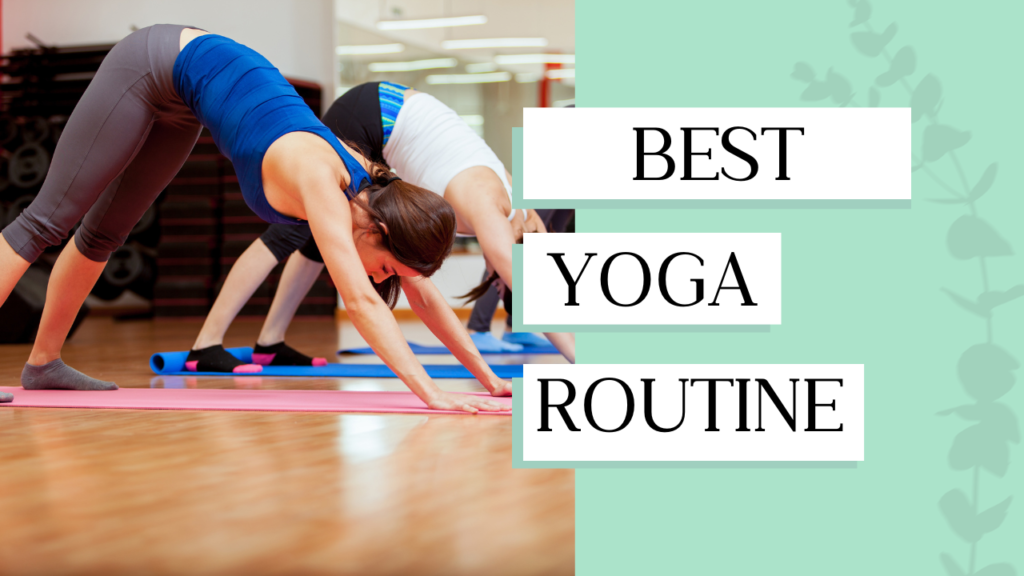
So, as you continue on your partner’s Best Yoga Poses for 2 journey, remember to approach each pose with an open heart and an open mind. Embrace the challenges, celebrate the victories, and above all, cherish the moments of connection and joy that arise along the way.
And if you ever find yourself struggling or feeling discouraged, just remember why you started in the first place. Whether it’s to strengthen your body, calm your mind, or deepen your connection with your partner, your intentions are valid and worthy of pursuit.
So, keep showing up, keep practicing, and keep spreading the love and light of partner Best yoga poses for 2 wherever you go. Together, we can create a world where connection, compassion, and community are at the heart of everything we do.
Namaste.
FAQs (frequently asked questions)
Common inquiries are answered to provide clarity and assistance.
Q: Can anyone do partner yoga?
Answer: Yes, partner yoga is suitable for people of all ages and fitness levels. It’s a great way to connect with others and deepen your yoga practice.
Q: Do I need a yoga partner to do partner yoga?
Answer: While partner yoga is designed to be practiced with a partner, you can also modify some poses to practice solo. However, having a partner enhances the experience and allows for deeper stretches and poses.
Q: Are partner yoga poses safe?
Answer: When practiced mindfully and with proper communication, partner yoga poses are safe for most people. It’s important to listen to your body, communicate openly with your partner, and avoid pushing yourself beyond your limits.
Q: Do I need to be flexible to do partner yoga?
Answer: No, you don’t need to be super flexible to do partner yoga. Many poses can be modified to accommodate different levels of flexibility, and practicing with a partner can help you safely explore your range of motion.
Q: What are the benefits of practicing partner yoga?
Answer: Partner yoga offers a range of benefits, including increased flexibility, improved communication skills, enhanced trust and connection with your partner, and a deeper sense of relaxation and well-being.
Q: How to do yoga for two people?
Answer: To do yoga for two people, start by finding a partner you trust and feel comfortable with. Then, choose a spacious, quiet area to practice together. Communicate openly with your partner throughout the practice, and focus on poses that allow for mutual support and connection.
Q: What are the 4 yoga pose categories?
Answer: The four main categories of Best yoga poses for 2 are standing poses, seated poses, reclining poses, and inversions. Each category offers a different focus and benefits for the body and mind.
Q: Which exercise is a combination of two yoga poses?
Answer: The Sun Salutation, or Surya Namaskar, is a combination of several yoga poses performed in a flowing sequence. It includes poses such as Mountain Pose, Forward Fold, Plank Pose, and Upward-Facing Dog, among others.
Q: What is the name of two-person yoga?
Answer: Best yoga poses for 2 is commonly referred to as partner yoga or yoga for two. It involves practicing yoga poses with the support and assistance of another person, often a friend, family member, or romantic partner.

